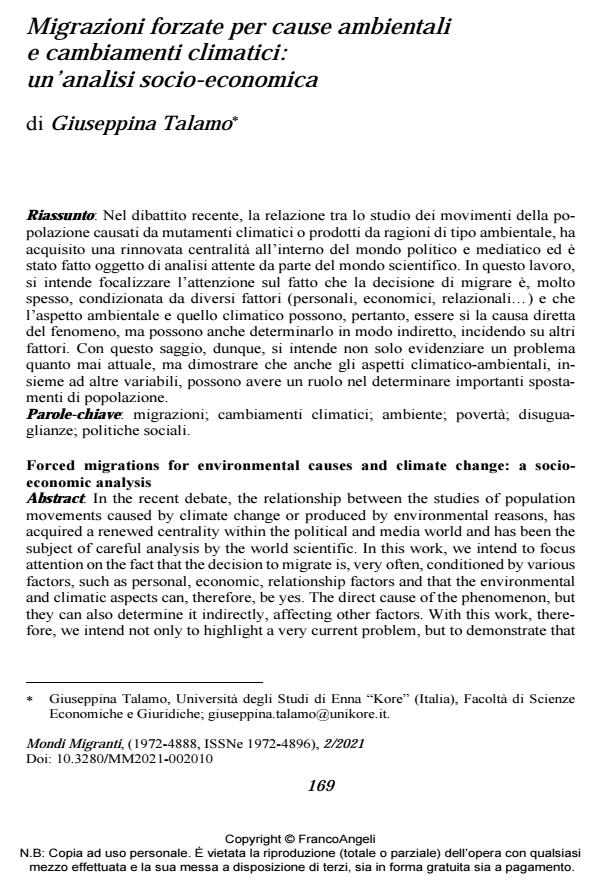Forced migrations for environmental causes and climate change: a socioeconomic analysis
Journal title MONDI MIGRANTI
Author/s Giuseppina Talamo
Publishing Year 2021 Issue 2021/2
Language Italian Pages 17 P. 169-185 File size 208 KB
DOI 10.3280/MM2021-002010
DOI is like a bar code for intellectual property: to have more infomation
click here
Below, you can see the article first page
If you want to buy this article in PDF format, you can do it, following the instructions to buy download credits

FrancoAngeli is member of Publishers International Linking Association, Inc (PILA), a not-for-profit association which run the CrossRef service enabling links to and from online scholarly content.
In the recent debate, the relationship between the studies of population move-ments caused by climate change or produced by environmental reasons, has ac-quired a renewed centrality within the political and media world and has been the subject of careful analysis by the world scientific. In this work, we intend to focus attention on the fact that the decision to migrate is, very often, conditioned by var-ious factors, such as personal, economic, relationship factors and that the envi-ronmental and climatic aspects can, therefore, be yes. The direct cause of the phe-nomenon, but they can also determine it indirectly, affecting other factors. With this work, therefore, we intend not only to highlight a very current problem, but to demonstrate that also the climatic-environmental aspects, together with other var-iables, can play a role in determining important population movements.
Keywords: migration; environment; climate; poverty; inequalities; policy.
Giuseppina Talamo, Migrazioni forzate per cause ambientali e cambiamenti climatici: un’analisi socio-economica in "MONDI MIGRANTI" 2/2021, pp 169-185, DOI: 10.3280/MM2021-002010